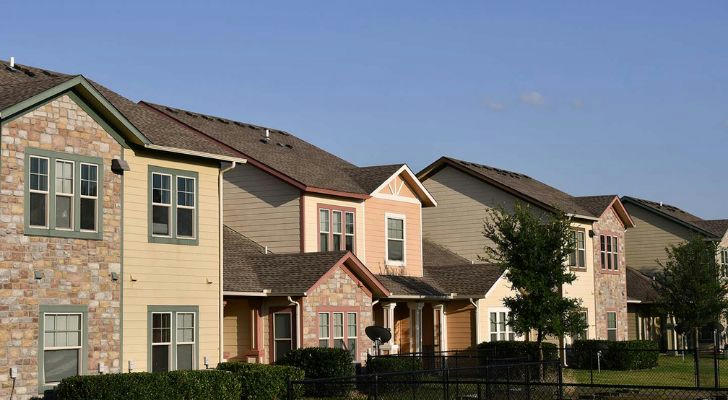Public Housing Explained: Who Qualifies and How to Apply
Public housing plays a critical role in ensuring housing access for low-income families, seniors, and people with disabilities across the United States. Funded by the U.S. Department of Housing and Urban Development (HUD) and managed by local housing authorities, these programs provide rent-subsidized units designed to help individuals live in safe, sanitary, and affordable homes. According to HUD’s 2023 report, over 1.2 million households currently reside in public housing across the country.

What Is Public Housing and How Does It Work?
Public housing refers to government-owned residential buildings offered at reduced rent for qualified individuals and families. Unlike Section 8 Housing Choice Vouchers—which help tenants rent from private landlords—public housing residents live directly in properties owned or managed by local Public Housing Agencies (PHAs).
The amount a resident pays in rent is typically capped at 30% of their adjusted gross income, a policy designed to keep housing affordable regardless of economic changes. These properties are required to meet HUD’s Housing Quality Standards and undergo regular inspection.
Who Is Eligible for Public Housing?
HUD outlines clear criteria to determine eligibility. Local PHAs may add additional screening procedures, but federal guidelines center around four key factors:
1. Income Limits (Verified and Region-Specific)
To qualify, applicants must fall below the low-income threshold for their area—defined as 80% of the Area Median Income (AMI). For example, in Los Angeles, the 2024 AMI limit for a single person is around $70,650, while in rural areas it may be significantly lower.
Income categories include:
- Low income – up to 80% of AMI
- Very low income – up to 50% of AMI
- Extremely low income – up to 30% of AMI
Official income limits by region are available on HUD’s website.
2. Citizenship or Legal Status
At least one household member must be a U.S. citizen or have eligible immigration status, such as lawful permanent residency. Mixed-status families may receive prorated assistance.
3. Background and Rental History
Local PHAs may screen for:
- Past evictions (especially from federal housing)
- Criminal convictions (e.g., violent offenses, drug-related crimes)
- Consistent payment history with previous landlords
However, HUD guidance discourages blanket bans, emphasizing fair access and rehabilitation opportunities.
4. Family or Household Composition
You may apply as:
- A single adult
- A couple or family with dependents
- A senior (62+)
- A person with qualifying disabilities
Priority may be given to families with children, individuals with urgent housing needs, or those exiting homelessness.
The Application Process: Step by Step
While demand is high and waitlists are common, thousands of applicants successfully access public housing each year. Here's how to navigate the process:
1. Locate Your Local Housing Authority
Use the official PHA directory on [hud.gov] to find the nearest housing authority. Some agencies cover entire counties; others are city-based.
2. Submit Your Application
Most PHAs allow in-person, online, or mail-in applications. Be prepared to provide:
- Income verification (W-2, tax returns, SSI/SSDI documents)
- ID and Social Security numbers for all household members
- Immigration documents (if applicable)
- Previous landlord references or rental history
Keep a copy of your application and submission date for future follow-up.
3. Waitlist Placement
Due to high demand, most applicants are placed on a waiting list. Wait times vary from a few months to several years, depending on the region and applicant priority level.
Some PHAs use preference points for:
- Veterans
- Survivors of domestic violence
- Seniors
- Local residents or workers
4. Screening and Interview
When your name reaches the top of the list, you’ll undergo a more in-depth screening. This includes income verification, background checks, and possibly a home visit or in-person interview.
5. Unit Offer and Lease Signing
Once approved, you’ll be offered a unit. You may have limited chances to accept; turning down multiple units could place you at the bottom of the list again.
Tenant Responsibilities and Rights
Public housing residents have rights protected under federal law, but they also share responsibilities with their local housing authority.
Tenants Must:
- Pay rent on time based on income
- Maintain the unit in good condition
- Avoid illegal activity or lease violations
- Notify the housing authority of income or household changes
Tenants Have the Right to:
- Live in safe, decent housing
- Be free from discrimination (under the Fair Housing Act)
- Request reasonable accommodations if disabled
- Receive written notice before eviction or termination
Is Public Housing the Same Everywhere?
Not exactly. While HUD provides federal oversight, each PHA can set specific policies, preferences, and screening standards. For example, one city may prioritize seniors, while another prioritizes large families. Some locations also offer mixed-income or redeveloped properties with integrated social services.
Resources and Support
Applicants can improve their chances by staying informed and seeking assistance:
- Local nonprofit housing advocates offer help with applications and documents
- Legal aid services can support those facing denial or discrimination
- HUD-certified housing counselors provide guidance at housingcounseling Staying organized and persistent is key. Many PHAs advise updating contact information regularly and checking your application status every 30–60 days.
